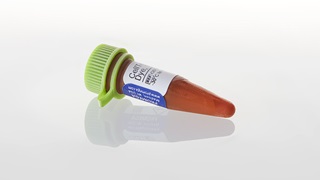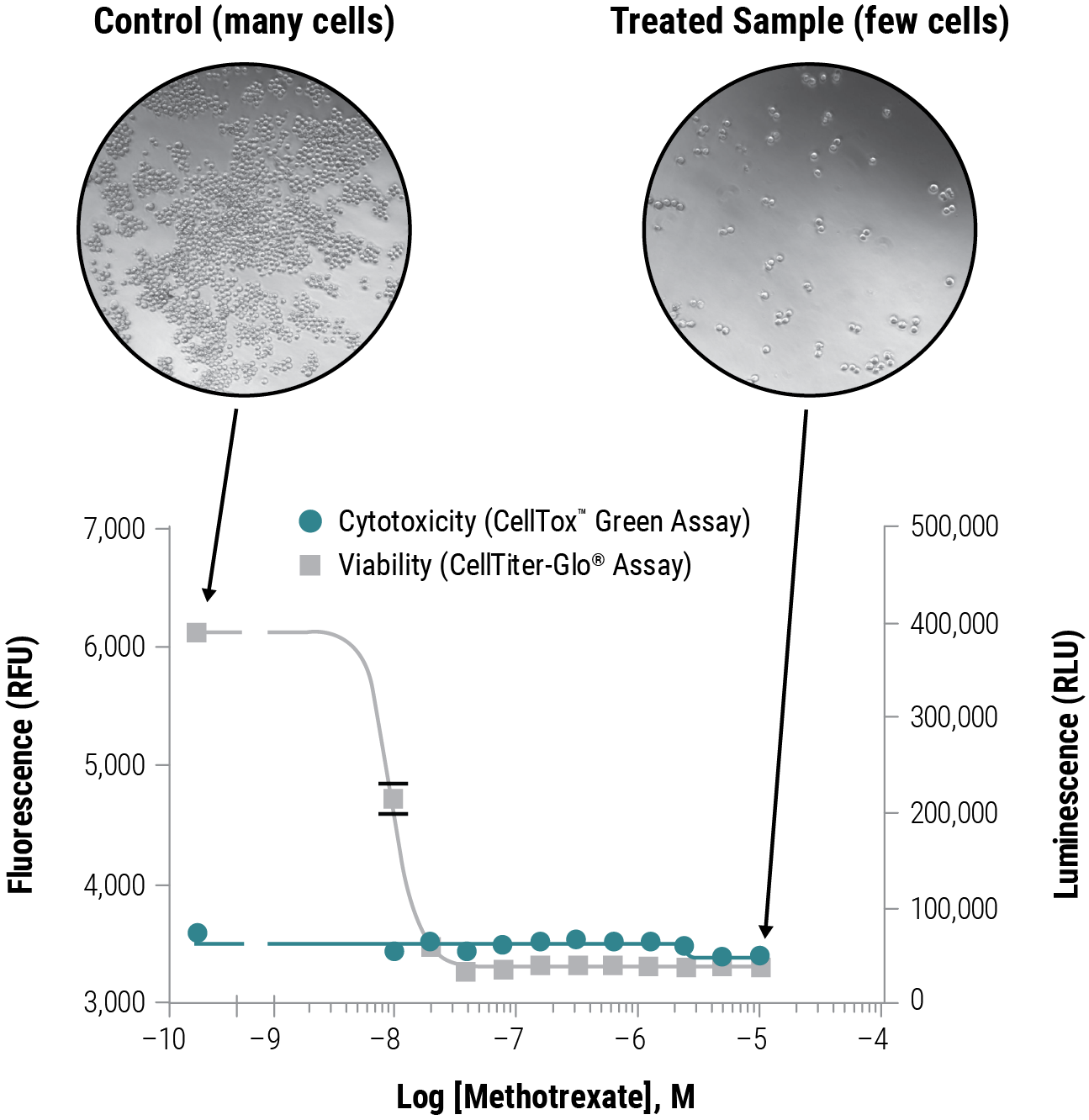인류의 건강과 생명공학 발전을 위해 봉사하는 기업 드림셀
We Serving the Health and Biotechnology of Humanity
We Serving the Health and Biotechnology of Humanity

제품코드 : G8741
제품정보 : Cytotoxicity Assay

Cytotoxicity assays based on detection of biomarkers released into the media can underestimate cytotoxicity in long-term exposures of 72 hours or more because of limited stability of the biomarker detected. The CellTox™ Green Cytotoxicity Assay provides an easy, fast and accurate method to determine toxic effects during or after long-term exposure of cells in culture. CellTox Green can be combined with other methods in multiplex assays to determine mechanism of toxicity, and is easily scalable from 96- to 1536-well plate formats.

CellTox™ Green Dye binds DNA of cells with impaired membrane integrity.
Dose- and exposure-dependent increases in cytotoxicity
In the experiment shown here, bortezomib caused appreciable cytotoxicity in K562 cells between the 4- and 24-hour time points. Additive fluorescence at later time points indicates continued loss of membrane integrity occurring as a function of cytotoxicity against remaining cells. The CellTox™ Green Dye was added at seeding.

Here, CellTox™ Green Dye was mixed with K562 Cells, which were plated, then dosed with compound. CellTiter-Glo® Cell Viability Assay Reagent was added at the end of the 72-hour exposure and luminescence (viability) measured. These two inverse measures of cell health resulted in EC50 agreement.

CellTox™ Green can be used in kinetic mode to determine the onset of cytotoxicity followed by multiplexing with the Caspase-Glo® 3/7 Assay in the same sample well to confirm caspase-3/7 activation at the appropriate time.

In this example, K562 cells were exposed to Methotrexate, an anti-proliferative compound, for 72 hours. CellTox™ Green Dye was added to determine cytotoxicity, then CellTiter-Glo® Reagent was added to the same sample well for viability determination. A viability assay alone would have misreported the compound as cytotoxic due to less cells in the treated sample compared to the non-treated control, which continued to proliferate. Multiplexing with a cytotoxicity assay reveals no change in signal as a result of compromised membrane integrity, indicating growth inhibition and not cytotoxicity.
